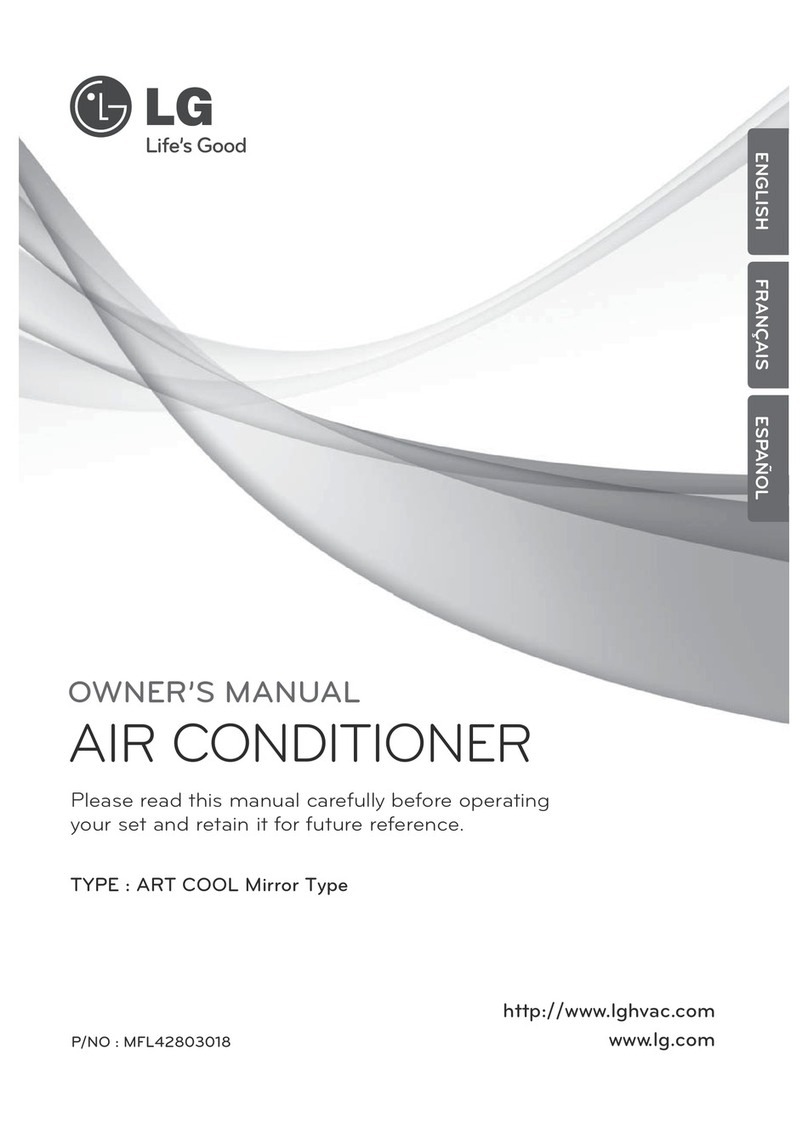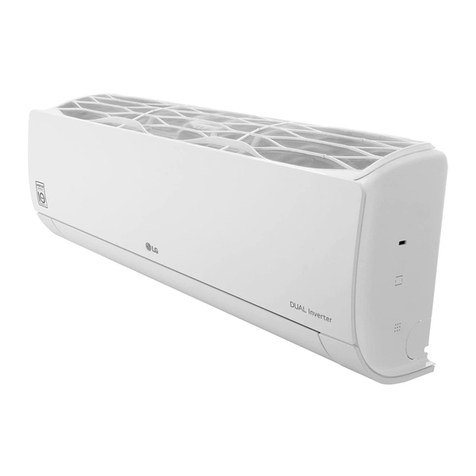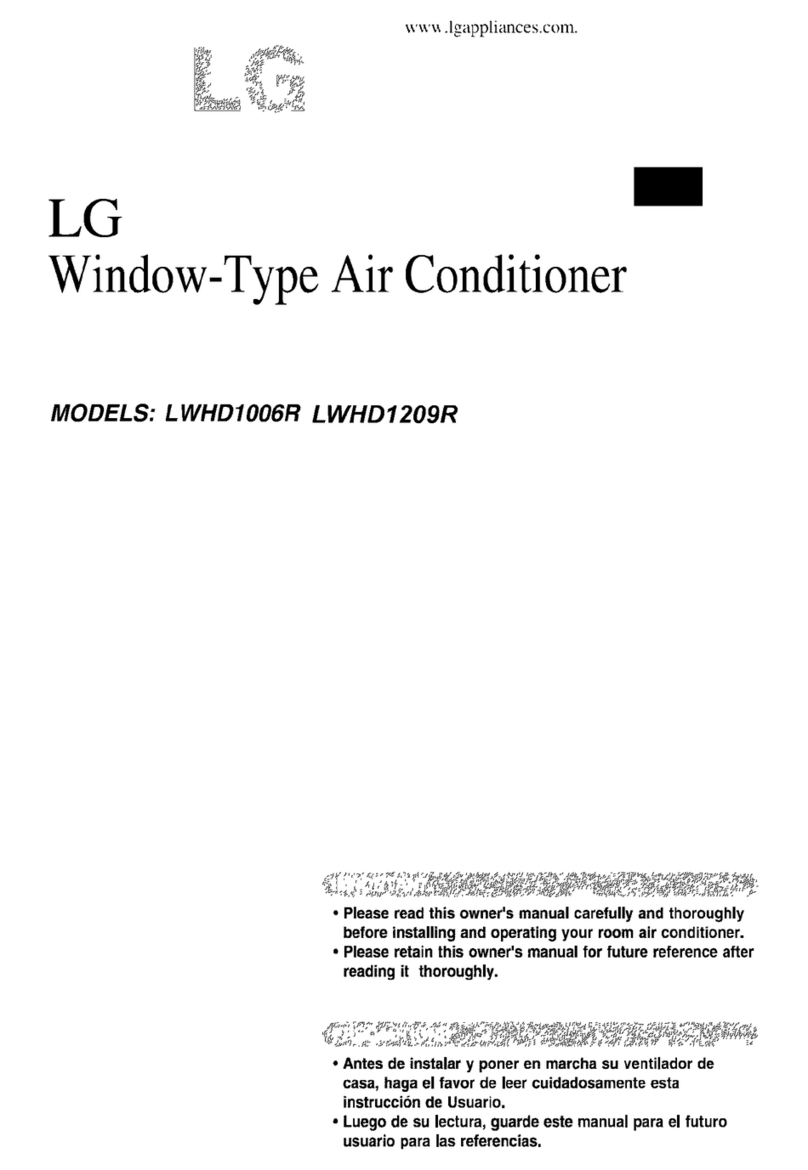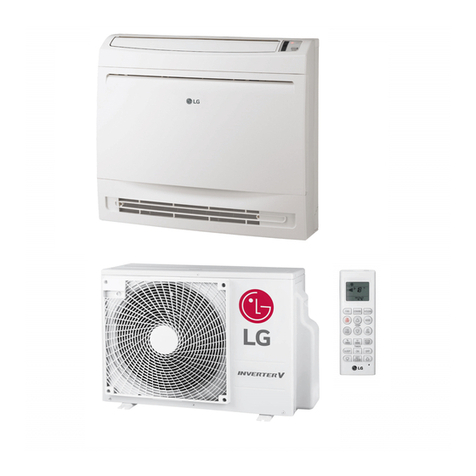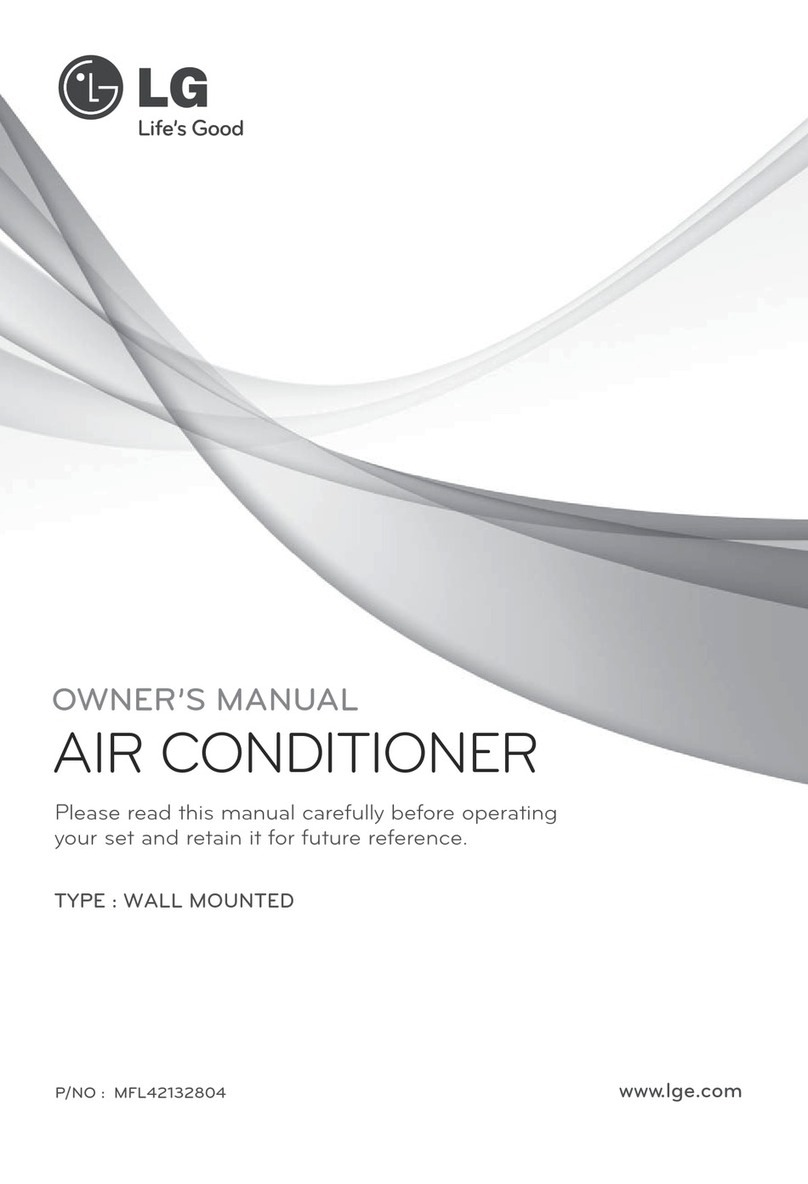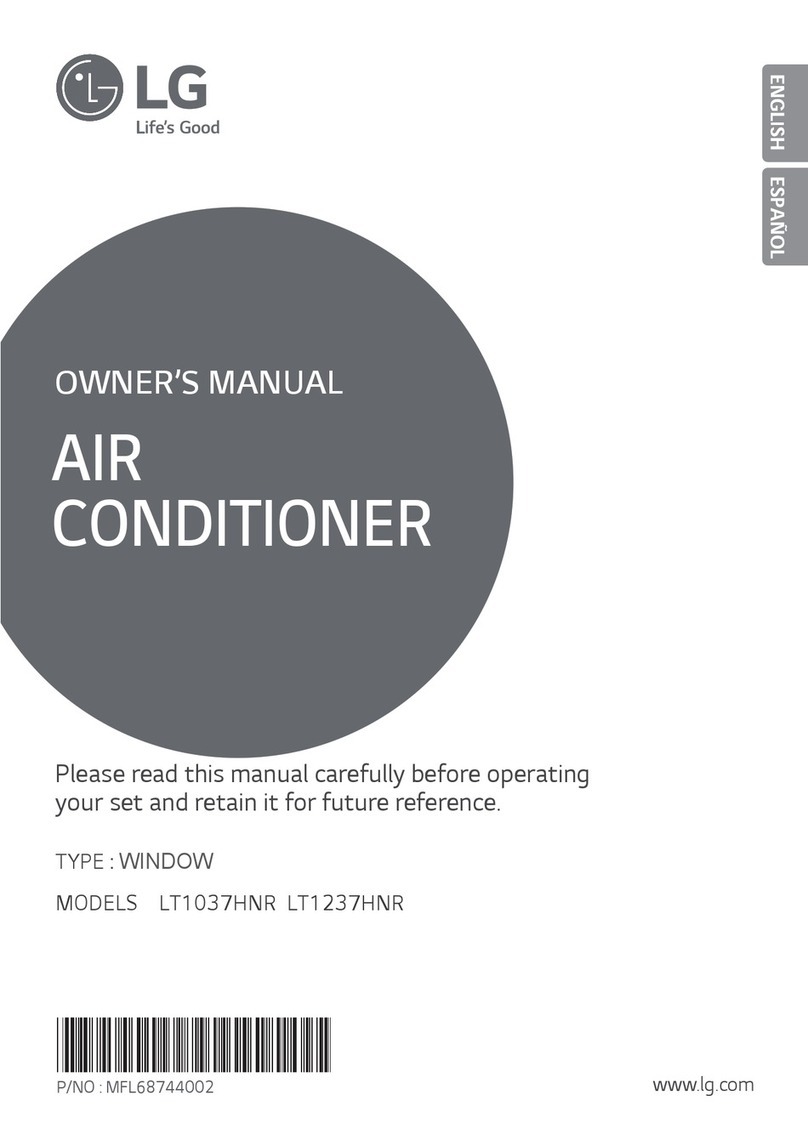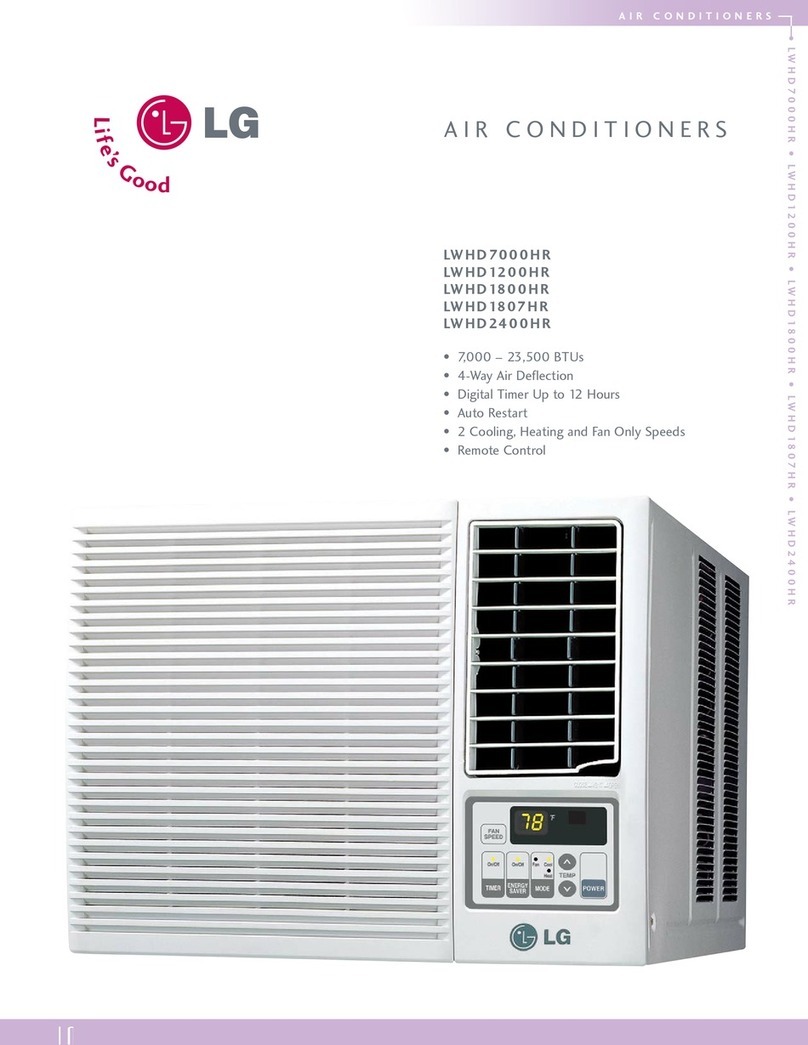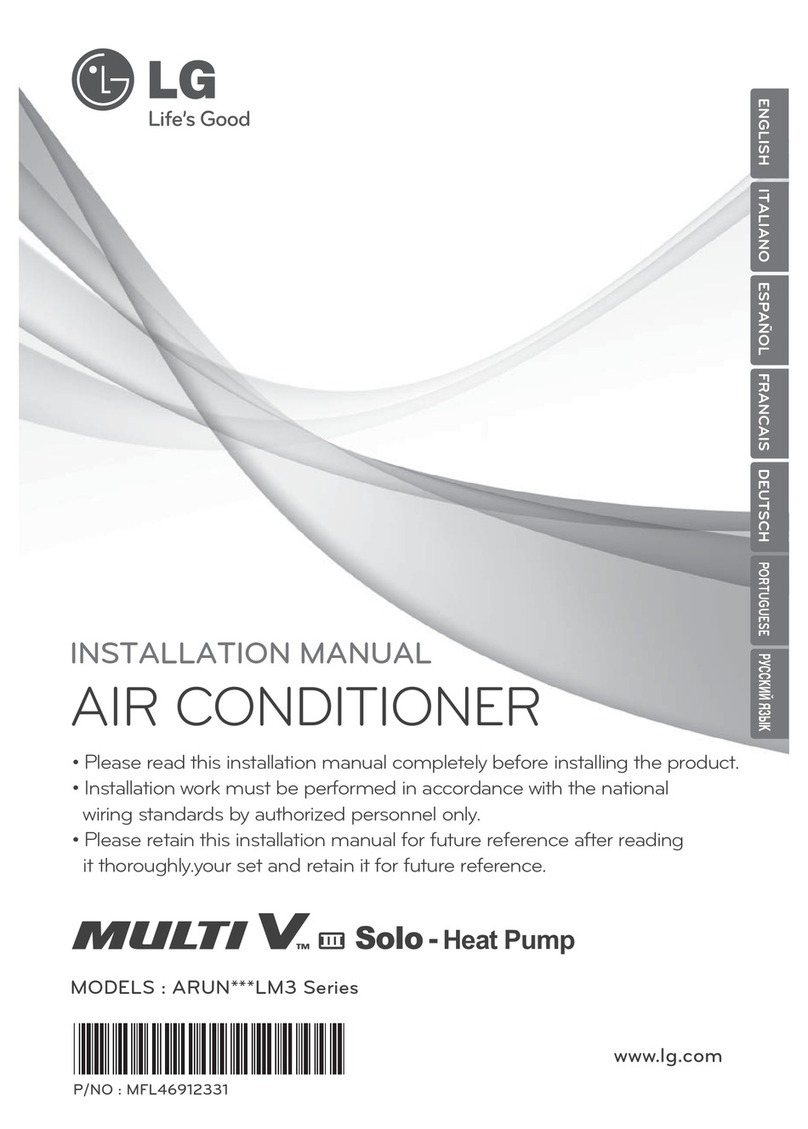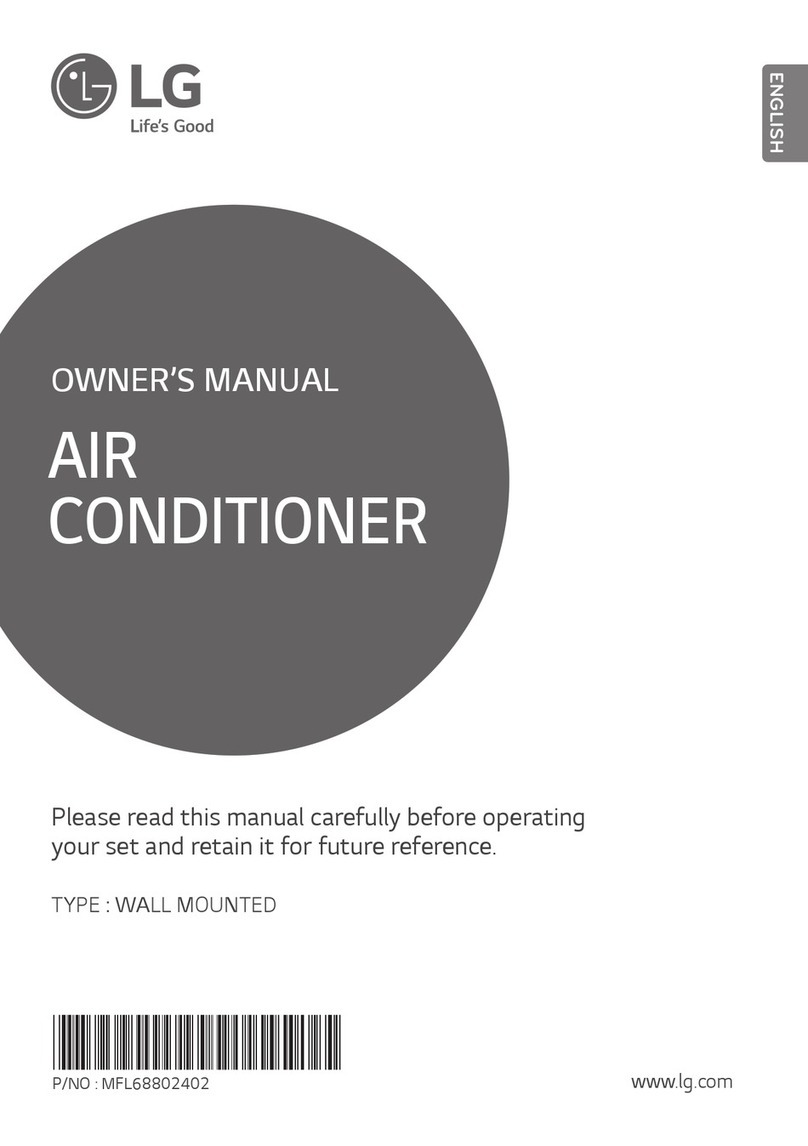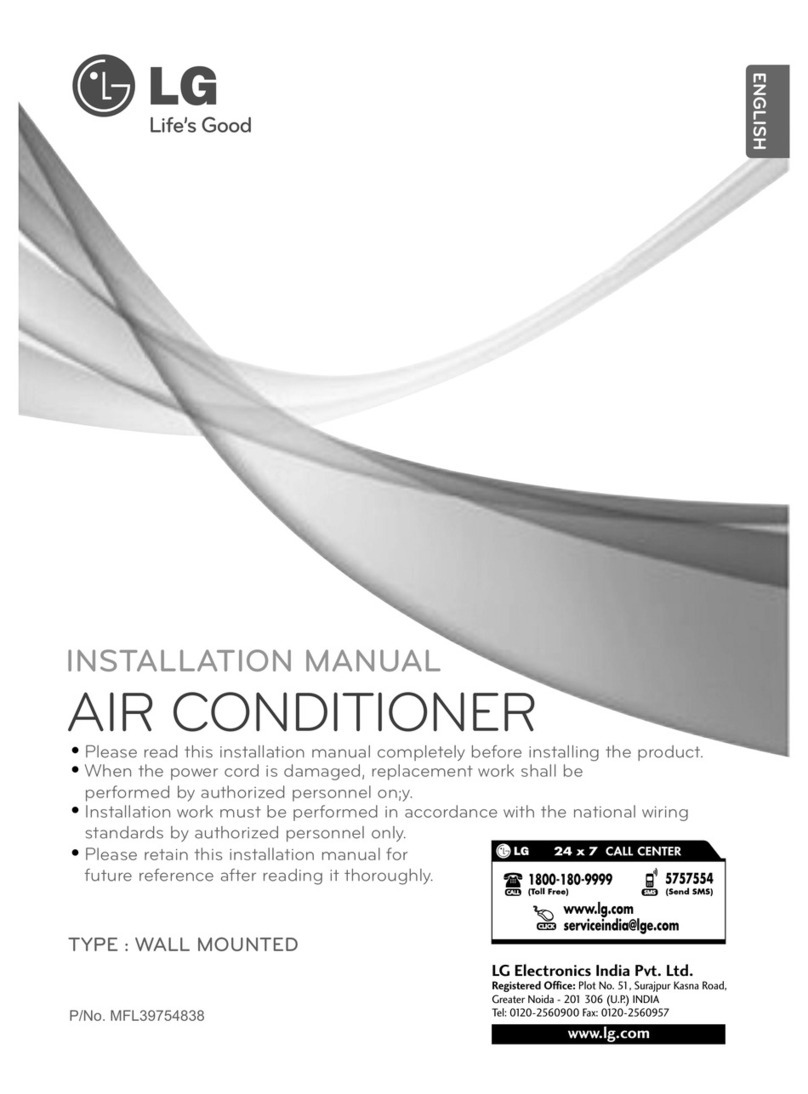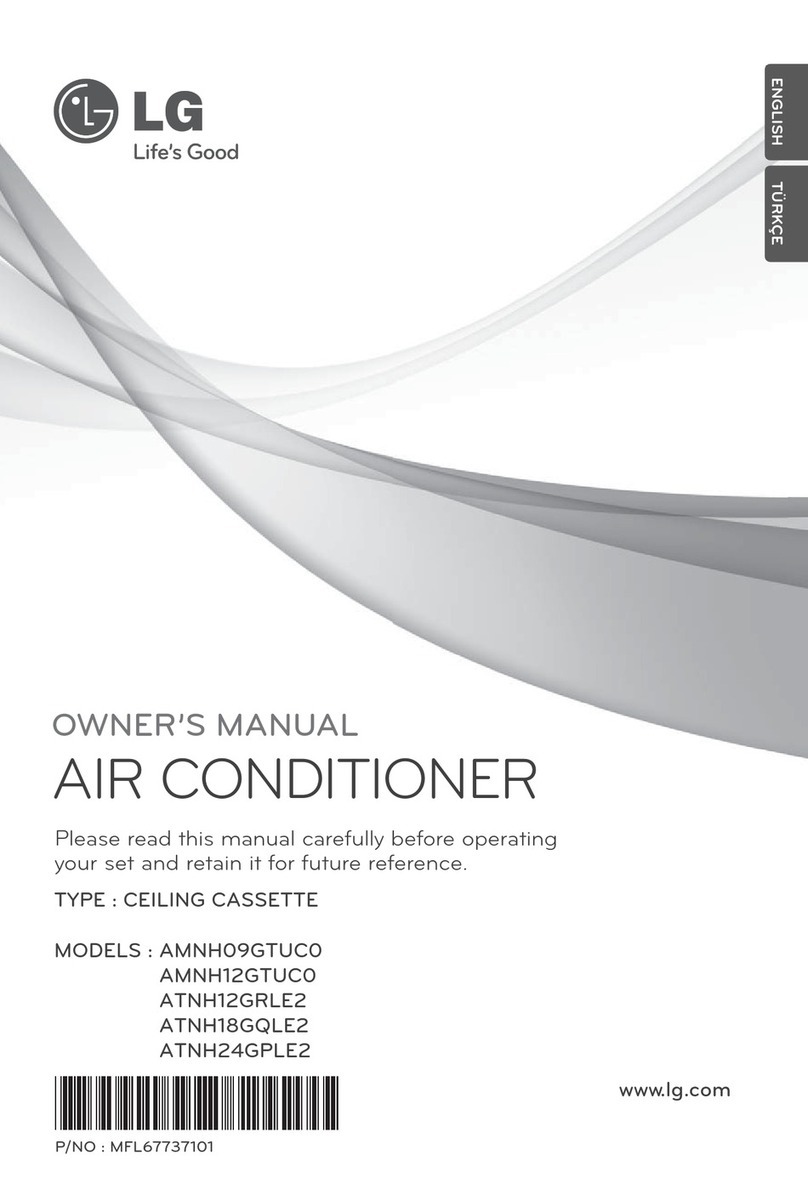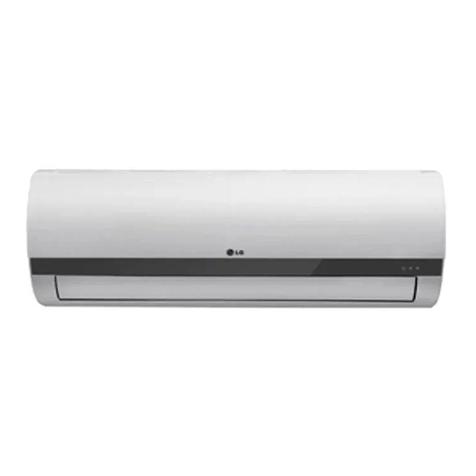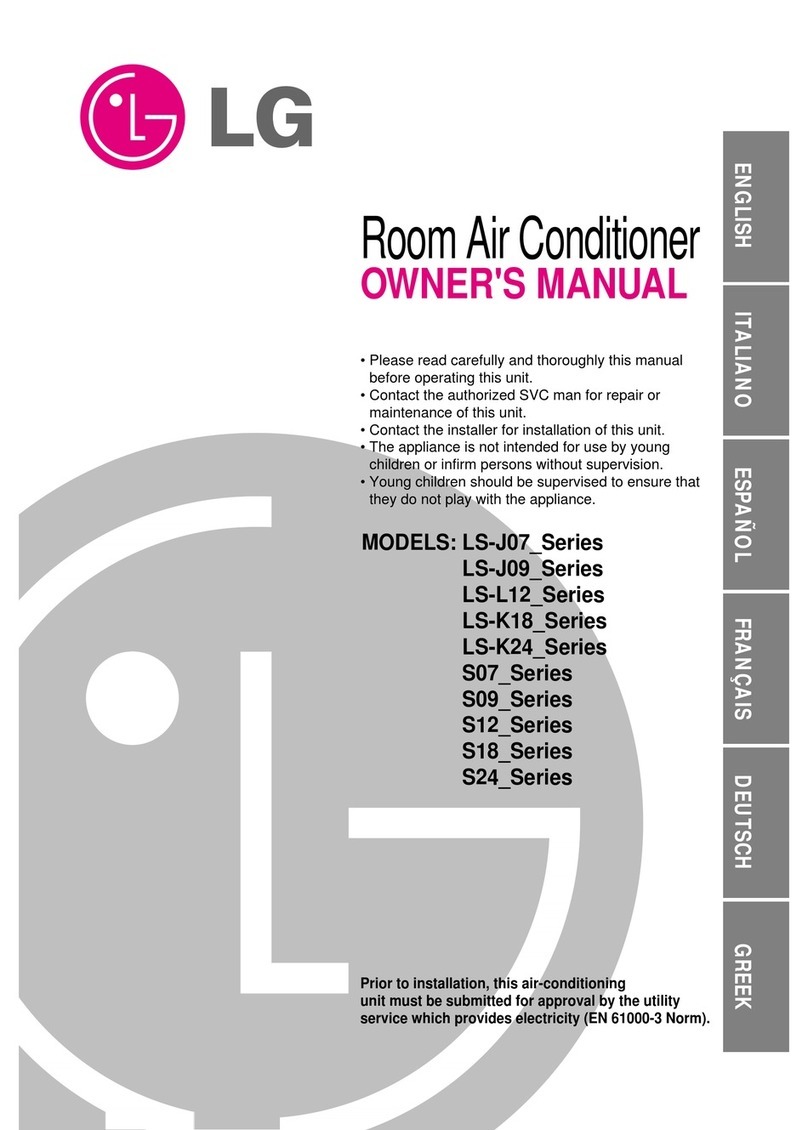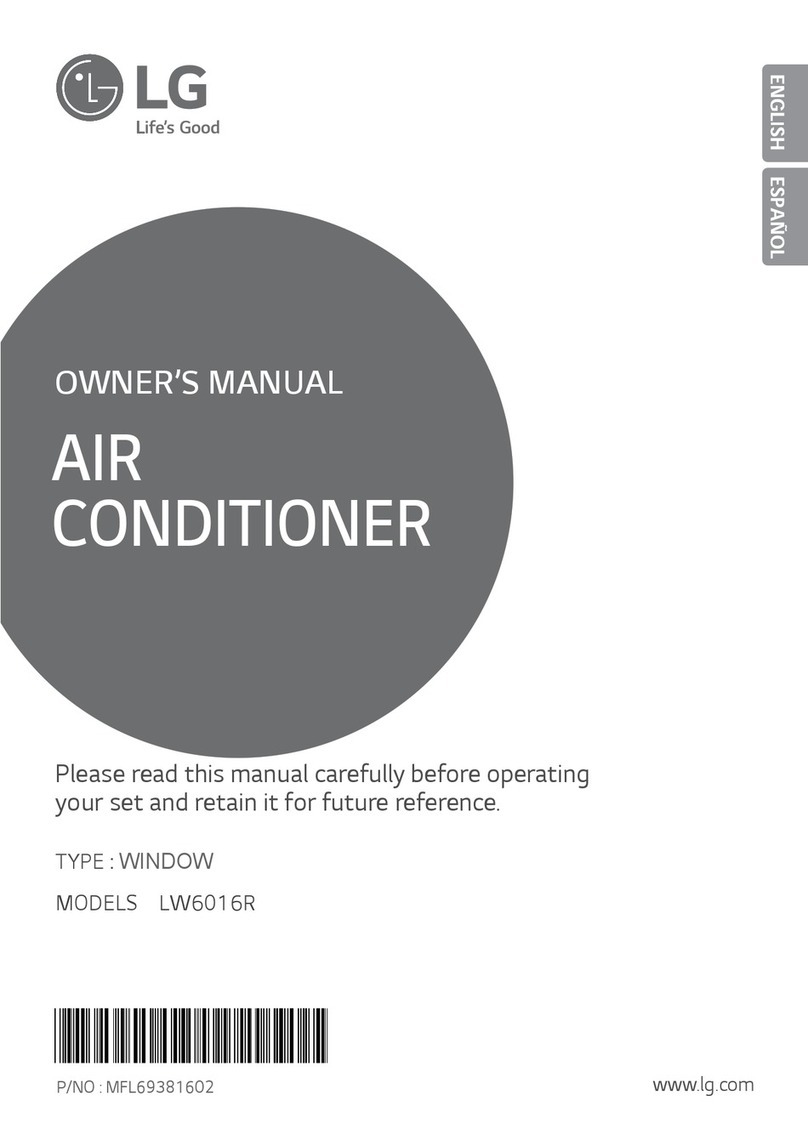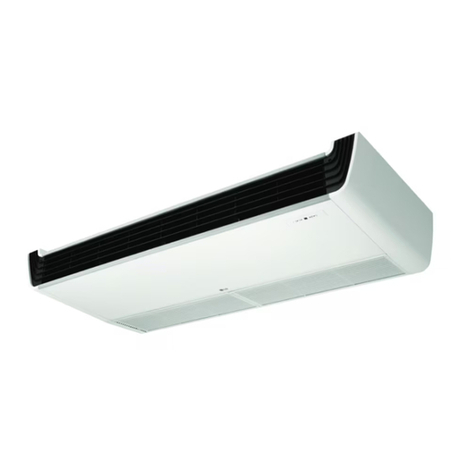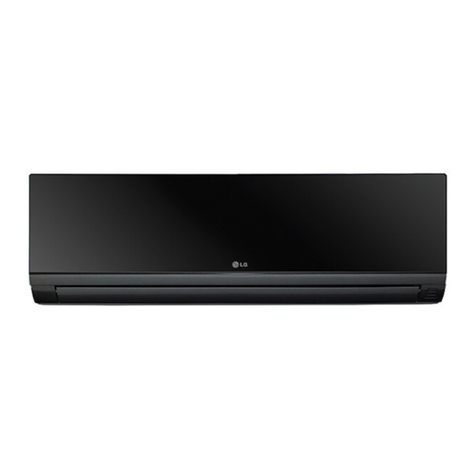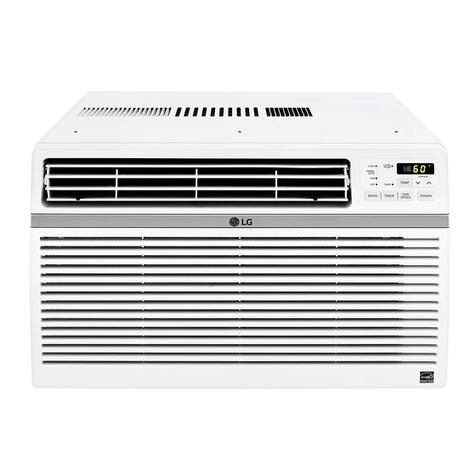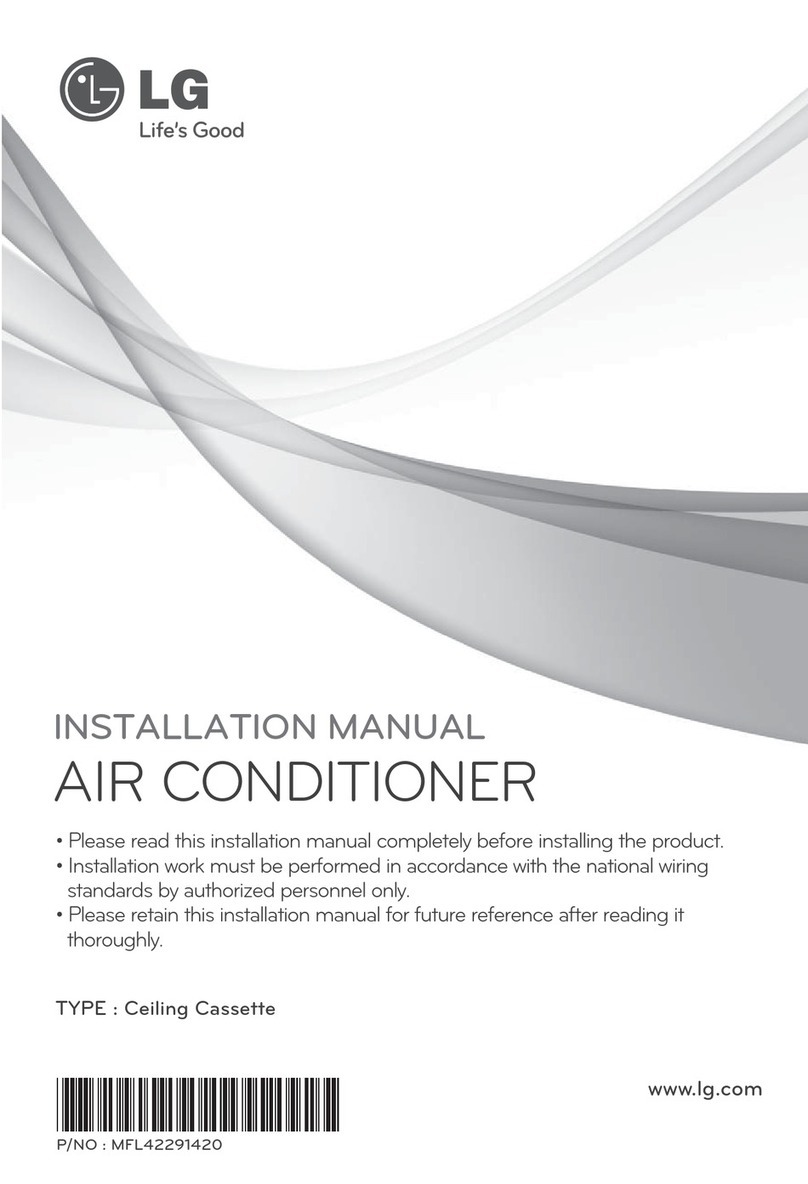LG LK Series Packaged Air Conditioners are
designed and manufactured to meet the
requirements of the Gulfs severe climatic con-
ditions and are built specifically for outdoor
installations, either on ground or roof level.
The LK Series Packaged Air Conditioners are
ideal for warehouses, large halls, schools,
mosques, or wherever the requirement is for
a heavy duty unit with a Scroll compressor.
Units are designed to operate in a wide ambi-
ent temperature rang from 21 °C to 52 °C.
LK Series Packaged Air Conditioners are com-
pletely assembled, internally wired, charged
with R-22 refrigerant at factory, tested before
dispatch and ready for installation. All that is
required on site is fixing filters and connecting
ducting and power supply. Units are designed
for ducted systems which will enable them to
be installed on roof tops or on the ground.
Points to remembered
Being an electromechanical machine, the unit
may fall or cause difficulties. Remembering
the following few points will ensure correct
and prompt rectification and continued optimal
performance:
- A correct installation ensuring proper clear-
ances for correct condenser air flow and
maintenance as per the drawings shown for
recommended clearance
- Proper level base on foundation with appro-
priate vibration mount. All connections and
hook up to be followed as per instructions,
which ensures long term trouble free opera-
tion and performance.
- If power fuse is blown off, be sure to replace
the same with a new fuse having pre
designed Amperage. Do not use a steel wire
or copper wire instead of proper fuse.
Genuine fuse ensures safety and proper pro-
tection. Incorrect fusing may cause fire or
trouble with your equipment. Before replac-
ing any fuse or opening any electrical
panel door, make sure the main switch is
OFF
- Do not spray or sprinkle water directly over
or into the air conditioning equipment for
cleaning because electric insulations and ter-
minal of the components are opened
- This Air conditioning equipment is meant to
be installed out doors and suitable to normal
environment elements. Do not try to cover
or block any inlets or discharge openings to
condenser
- Periodical maintenance of the unit will give
better performance in the long run than
only break down maintenance.
NOTE
!
LG reserves the right to change, in part
or in whole the specifications of its Air
Conditioning Equipment at any time in
order to add the latest technology.
Therefore, the enclosed information may
change without any prior notice.
UNIT DESCRIPTION
8UNIT DESCRIPTION:
ENGLISH
